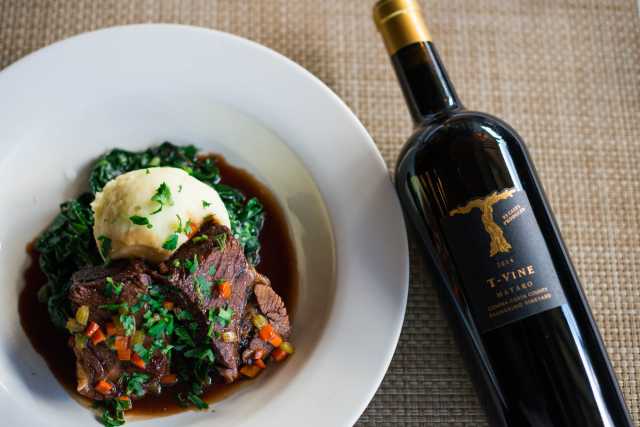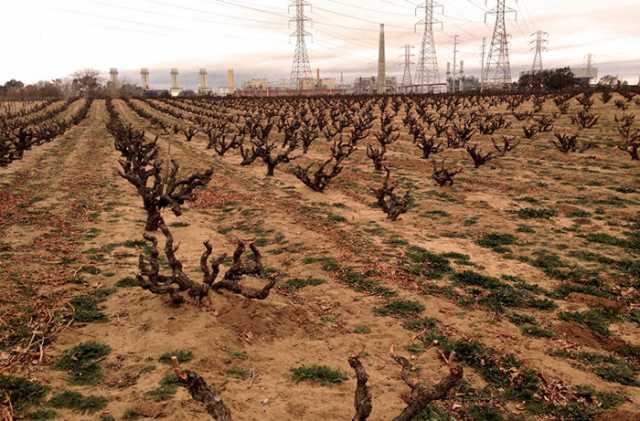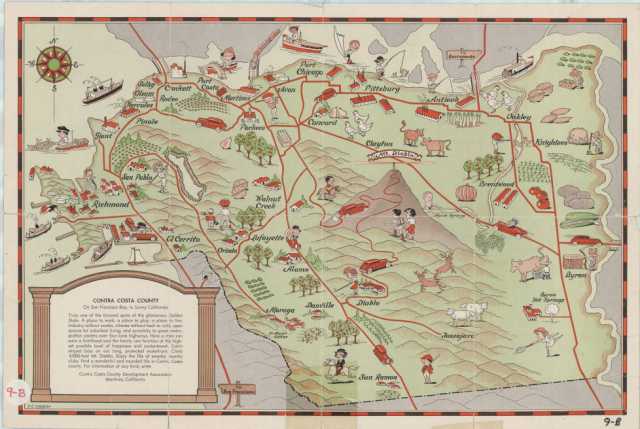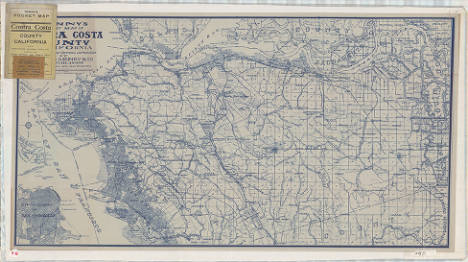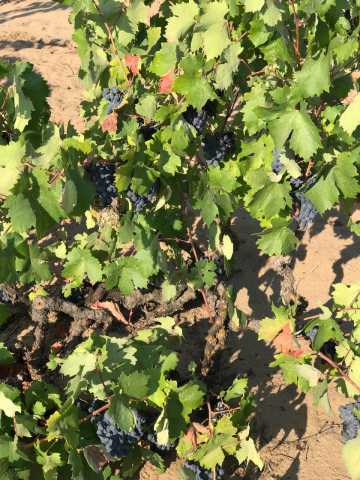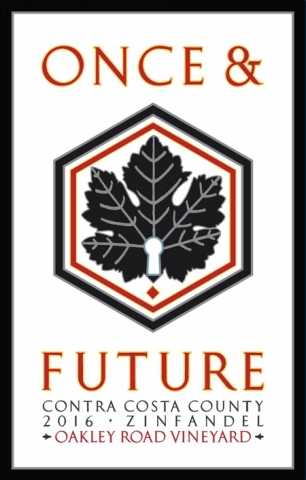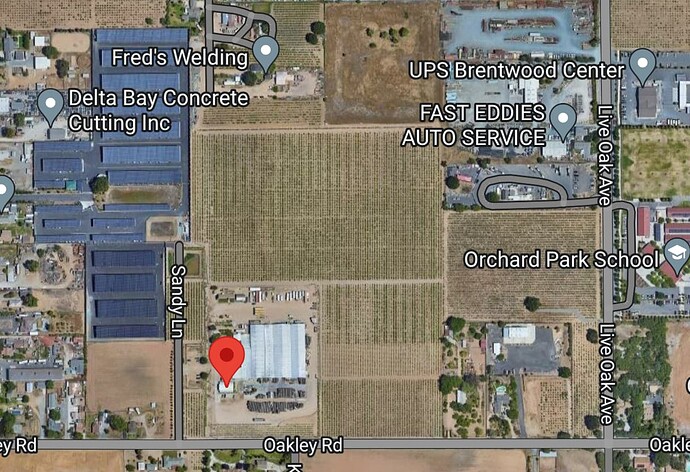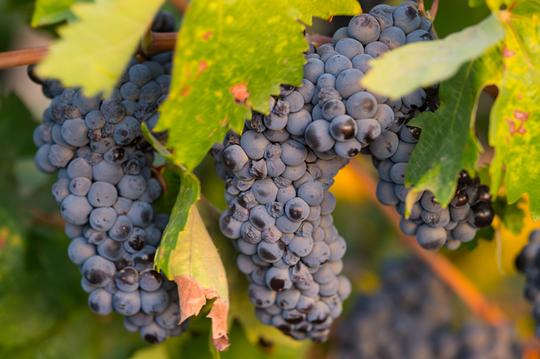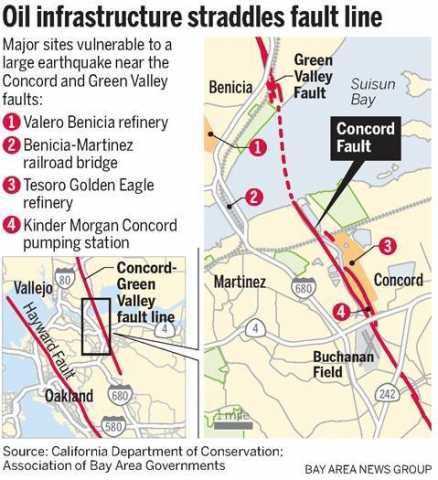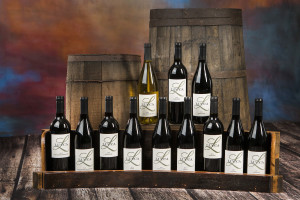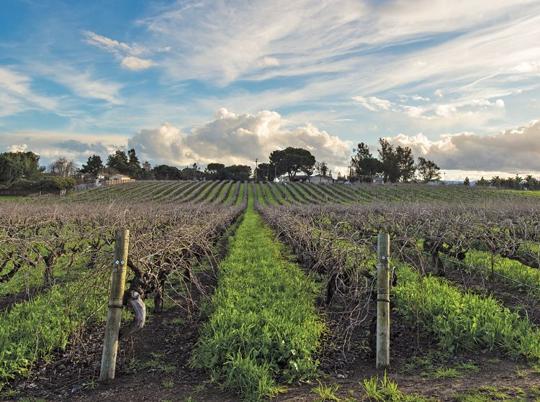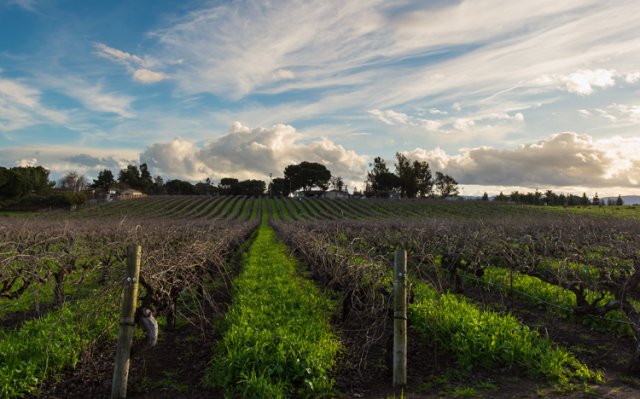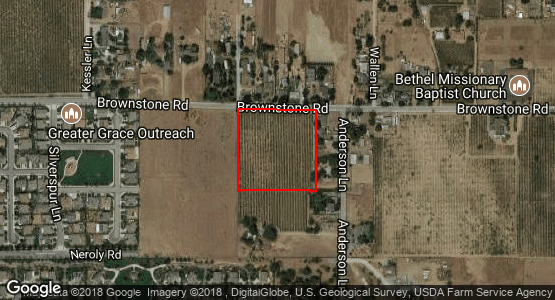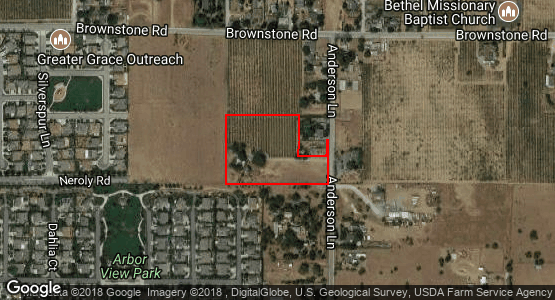Contra Costa Confusion (…continued?)
• Gonsalves / Sandy Lane Vineyard:
Dan and Steve Gonsalves own, lease, or farm many vineyards in the Oakley area. “Gonsalves” or “Sandy Lane” is used to designate several vineyard sites, easily leading to confusion.
One Gonsalves property was featured on the label of Bonny Doon Vineyards’ “CONTRA” red blend:
Co-CoFermented blog
“Red Harvest Redux”
September 19, 2010
"Mike [Parker] happened to be at the Gonsalves property minutes after I was, and he brokered a monster grape sale one day later. He did have to laugh when I told him that that cul-de-sac was a notorious dumping ground: That day workers were picking for Bonny Doon’s ‘CONTRA’ blend, whose label actually showcases a derelict couch tossed at the end of the road. It’s the dominant feature of the Contra label: a ratty sofa surrounded by old vines."
Bonny Doon blog
“Contra Contra or How I Lost my Marketing Mojo”
January 3, 2013
“Philippe Coderey, our viticulturist at the time, had taken a photograph of one of the vineyards in Antioch, and couldn’t get over the fact that a) someone had had the poor form to dump their trash in a vineyard, and b) even more worrisome, one of our growers had not the wit nor wherewithal to pick up the trash from aforesaid vineyard. Philippe was just appalled. For me, the picture perfectly captured the terroir of Antioch, CA, home of meth labs and rusted muscle cars up on blocks, which I sometimes refer to as ‘Appalachia by the Bay’. We Photoshopped the picture a bit, mostly removing some (additional!) unseemly trash from the photo, and tweaking the color value of the cover-crop a bit to get the most felicitous contrast with the color of the type.”
City of Oakley Chamber of Commerce
“Gonsalves Vineyards”:
“Gonsalves Vineyards is located at the address 361 Sandy Lane in Oakley.”
Roster of vineyards owned or farmed by the Gonsalves family / Sandy Lane Properties
• Salvador Vineyard 2371 Oakley Rd (uprooted and developed into residential properties)
No other producer has bottled a “Salvador Vineyard” Zinfandel. The name most likely is proprietary:
Turley 2013 “Salvador” Zinfandel details
SF Gate
“A Native Son with an Eye for Vineyards”
by Jon Bonné
February 5, 2012
"…He [Tegan Passalacqua] helped convert the ‘Salvador’ vineyard, 110-year-old Zinfandel grown on 30 feet of sand, to organics. When I visited a few years ago, vine trunks sat in seemingly lifeless soil. Now a cover crop carpets the rows.
"‘He is so hands-on in the sense of how much he cares about the vineyard,’ says Steve Gonsalves, ‘Salvador’s’ owner.
“…‘Salvador’: Steve Gonsalves’ 115-year-old Zinfandel vineyard on 30 feet of sand is now farmed organically and makes one of Turley’s prized vineyard designates.”
Food & Wine
“The Battle for America’s Oldest Vines”
by Ray Isle
March 31st, 2015
“It would be easy to drive by the ‘Salvador Vineyard’ in Oakley, California, without giving it a second thought. The plot is on a residential backstreet, 10 or so acres of widely spaced, low-growing vines. On one side, behind a wooden fence, is a cookie-cutter subdivision full of dun-colored suburban houses. On the other side, more houses. There’s no office at ‘Salvador Vineyard’ and certainly no winery, only a ramshackle, ranch-style building that the Gonsalves family, who own the property, use for storage. In fact, the ‘Salvador Vineyard’ basically looks like a big, drab, sandy backyard, one that just happens to be filled with vines. It’s the definition of unprepossessing.”
** EDIT ** February 18, 2020
From the Bedrock Wine Company “Spring 2020 Release” email:
"…We lost ‘Salvador Vineyard’ a few months ago. When I say ‘we’ I do not mean Bedrock Wine Co., Chris, or me, or even maybe Turley - though they had taken the fruit for a quarter century - rather, wine and history lovers as a whole lost something precious.
“To the developers that bought the ranch for tract homes, the vines were just another relic of a bygone age in Contra Costa County - I am sure they had no idea that Robert Parker gave the 2013 ‘Salvador’ the second-highest score he ever gave for a Zinfandel. They were 98 points on the development potential though. Driving the streets of Oakley, it is easy to see that ‘Salvador’ is just the most recent casualty of decades of suburban creep that will continue to cost the area many of its last remaining vinous jewels…”.
• Duarte Family:
For years, the Turley “Duarte Vineyard” Zinfandel included fruit from the “Evangelho”, “Pato”, and “Salvador” vineyards.
Turley 2013 “Duarte” Zinfandel details
To confuse the matter of the “Duarte Vineyard’s” identity, Jon Bonne wrote the following in a SF Gate article from 2009:
“Duarte: Not new by any stretch, but as new winemakers turn to Contra Costa County vineyards, this parcel of old-vine Zinfandel - mostly known for the bottling by Turley - is likely to get more attention.”
Here is a note from the previously cited Food & Wine article for Turley’s “Duarte” Zinfandel:
“…2011 Turley ‘Duarte’ Zinfandel ($35):
A tribute to the ancient vines of Contra Costa County, this red draws on the ‘Salvador’, ‘Evangelho’ ,and ‘Mori’ vineyards (the latter planted by a pair of gravedigger brothers in the 1940s).”
Turley Cellars’ website states that the “Duarte” Zinfandel is composed of fruit from “Evangelho”, “Mori”, and the “Del Barba” vineyards (“Salvador” was included in the blend through the 2019 vintage).
The Duarte family has/had a hold on a number of vineyard locations over its multigenerational tenure as local grapegrowers.
Several articles on this thread have made apparent that many prominent names in eastern Contra Costa’s grape-growing industry share family ties. One might facetiously assert that everyone is related in Oakley!
Tom Del Barba helped the writer of the “Co-CoFermented” blog locate a few Oakley vineyards, including the “Duarte Vineyard”, in an entry posted in September of 2010. The site was on Laurel Road, where a number of other ancient vineyards are/were situated.
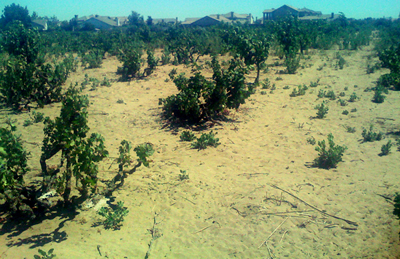
From the Scholium Project library notes on the 2008 “Sandlands” bottling:
"After harvest, that vineyard [Duarte Vineyard] was turned into doomed subdivisions in Contra Costa County, and we lost track of the region - in spite of its wealth of remarkable old-vine red vineyards."
Scholium Project library notes: 2004 “Sandlands” “Duarte Vineyards”
A one-acre section of the “Duarte Vineyard” was designated “Jesse’s Vineyard”, in honor of Dwight Meadows’ father. This relict surrounds a house, and is all that remains of the “Duarte Vineyard”.
Roster of vineyards owned or farmed by Diablo Vista Vineyards, operated by Dwight Meadows’ son Aaron.
• Cline Family Cellars Properties:
Cline Family Cellars owns Mulehead Growers as well as Oxford/Oxfoot Associates. The Cline/Jacuzzi family is the largest producer of wine from eastern Contra Costa County’s ancient vineyards. Cline Cellars offers several vineyard-designated Zinfandel and Rhône variety bottlings.
› Big Break Vineyard:
The “Big Break Vineyard” (#01) was planted in the 1910s. Its name stems from a 1928 levee breach and flood.
River News Herald
“Big Break Regional Shoreline Provides Glimpse into the Delta”
May 29, 2013
“In 1928, a break in the levees separated an asparagus farm from the San Joaquin River and Dutch Slough, thus flooding out the area and creating ‘Big Break’. The vast acreage of water can be seen from the Antioch Bridge, and covers over two miles of shoreline in the City of Oakley. It is sometimes referred to as the ‘Inland Coast’…”.
Big Break Regional Shoreline
“The name ‘Big Break’ comes from a 1928 break in the levee that separated an asparagus farm from the San Joaquin River and Dutch Slough.”
Big Break Regional Shoreline’s website features a cool video, narrated by a very confident young’un, highlighting the park’s massive 3-D map of the East Bay:
Cline Cellars’ “Small Berry” Mourvèdre is sourced from a 9-acre block within the “Big Break Vineyard”. This ancient-vine bottling has increased in price substantially in recent years. A single-vineyard Grenache is sourced from a 40-year-old “Big Break” parcel.
› Lucchesi Vineyard:
The grapes for Cline’s single-vineyard Petite Sirah are harvested from the “Lucchesi Vineyard”. Alan Lucchesi of Brownstone Growers is the vineyard manager for Cline Cellars’ Contra Costa properties.
There are at least two distinct vineyards that use the “Lucchesi” moniker.
The “Emerson Vineyard” is located within northeastern Oakley’s Dutch Slough Restoration Project site. Presently, Three Wine Co. makes wine from this ~14-acre plot of old-vine Carignan. In fact, Matt Cline played a pivotal role in preventing the vineyard’s destruction.
The “Emerson Vineyard” is known by several names: “Joaquin José / JJ”, “Lucchesi”, “Dutch Slough”.
Matt and Erin Cline’s Three Wine Company uses the “Lucchesi Vineyard” designation to honor that family’s long history of working with local wine grapes. Today, two Lucchesi brothers are associated with viticulture and viniculture. Mark owns Lucca Winery in Ripon; he sources his grapes from Oakley-area plantings. Alan serves Cline Cellars vineyard manager. Also, as owner of Brownstone Growers, he oversees the farming of many Antioch, Oakley, Brentwood, and Knightsen vineyards.
Alan Lucchesi’s Brownstone Road property appears to be the “Lucchesi Vineyard” of Cline Cellars.
› Bridgehead Vineyard:
The “Bridgehead Vineyard” is a large, triangle-shaped planting, located at the intersection of Oakley’s Main Street and Bridgehead Road. The ancient vines are just South of the town’s old DuPont site. Cline produces a single-vineyard Zinfandel from its grapes.
According to the Cline Cellars website:
“Our ‘Bridgehead’ vineyard is named for Bridgehead Road in Oakley, California, to which it runs adjacent. This vineyard consistently produces one of our most individual and refined lots of Zinfandel. Planted by Italian immigrants well before the turn of the century, the vines are head-trained, dry-farmed in sandy soil, and engulfed in a unique band of cooling air from the Sacramento and San Joaquin Rivers. This produces a stunning, concentrated harvest.”
Portions of the “Bridgehead Vineyard” (#02 & #03), as well as the “Big Break Vineyard” were accidentally exposed to defoliants sprayed by a BNSF crew around March of 2016. A lawsuit is ongoing.
› Live Oak Vineyard:
The third major Cline Contra Costa vineyard is “Live Oak”, which yields a larger-bodied, more opulent interpretation of Zinfandel. As there exists a street in Oakley by the same name, it theoretically should not be difficult getting a geographic fix on the vineyard.
Cline Life: “Live Oak Zinfandel - Zin Lovers Only!”
** EDIT ** May 19, 2021
The “Live Oak Vineyard” bottling originally was composed of fruit from the “Marchetti Vineyard” and the “Romiti Vineyard” (which was sold around 2019).
The “Marchetti Vineyard” is located at 20 Poco Lane in Oakley, off of Live Oak Avenue (Southwest of the corner of Oakley Road and Live Oak Avenue). The vines are approximately 60-years-old.
› Massoni Vineyard:
The “Massoni Vineyard” (#13) is one source of Grenache composing 16% of Cline Cellars’ “Cashmere” red blend. The bottling also includes 62% Mourvèdre and 22% Syrah. While the producer’s data sheets identify the places of origin for the Grenache grapes (“Massoni” and “Big Break”), vineyards contributing the remaining percentages of the wine are not named. Perhaps this is because the Mourvèdre and Syrah grapes are harvested from Cline’s CoCo and Sonoma vineyards, respectively.
The “Massoni Vineyard” is locate on Tule Road, just outside the Oakley city limits. I believe another “Massoni Vyd” once existed.
Image: “Massoni Vineyard”
•
Del Barba Family Properties:
Roster of vineyards owned or farmed by the Del Barba family
Recognition of the Del Barba family name has grown as its appearance on wine labels recently has increased. More than one “Del Barba” vineyard site is found in Oakley. The Del Barba “home vineyard” is on Rose Avenue, just South of Main Street. Another Del Barba planting is down Rose Ave near Laurel Road. The Del Barbas, like the Gonsalves family and Alan Lucchesi’s Mulehead Growers, tend to multiple Oakley vineyards.
A Co-CoFermented blog entry from September 11, 2010, shares the following information about Mr Tom Del Barba’s vineyard work:
"Although a ‘Del Barba Vineyard’ designation rarely graces a label, estate fruit has been a key component in several bottlings over the years. Cline, Bonny Doon, our pal Matt Cline at Three Wine Company, and, most recently, winemaker Tadeo Borchardt at Neyers are among ‘Del Barba Vineyards’ clients past and present.
"The stuff being picked today at the Laurel property was a prime ingredient in Bonny Doon’s ‘Cardinal Zin’, and the relationship with ‘CZ’s’ new owners, The Wine Group, continues the love. In fact, Bonny Doon founder/winemaker, Randall Grahm is a big fan of the ‘Del Barba’ Mourvèdre, having used it for his ‘Old Telegram’ and ‘Le Cigare Volant’ projects.
"…Tom was also a wealth of information and lore about some of the crazy-quilt vineyards we were trying to identify. Turns out that ‘Duarte’ is located a few blocks over, also on Laurel. The other ‘Del Barba’ parcels are situated all along Rose Avenue, and - wonder of wonders - because of the way Main Street curves, that post office plot of Alicante [Bouschet] and Mataro is actually the back part of ‘Del Barba’! And that post office plot is one of Randall Grahm’s faves!.."
The ancient-growth “Oakley Road Vineyard” identified on labels of Once & Future Wine Co.'s Mataro and Zinfandel bottlings is located at the northwest corner of Neroly Road and Oakley Road.
• Continente Vineyard:
110° Magazine
“JAC Continente”
By Robbie Simmonds
September 29, 2017
"Three Continente brothers - Giovanni, Gesuere, and Andrea - moved into the Oakley area in the 1900s, setting up home on the same property Continente Ranch occupies today. Their involvement with food production, however, was a legacy stretching back to their roots in Monte Di Procida, a province of Naples, Italy. They were attracted to the area because the climate and soil were similar to that in their Italian home.
“Andrea was the key member of the family behind Continente Ranch’s subsequent history. His grandson John and other family members continue to manage the family operations that markets wine grapes in their local vineyard.”
Convenient Business website
Directory: “Continente Inc.”
“112 Sandy Ln, Oakley, CA, 94561-2937”
Roster of vineyards farmed or owned by Continente family
Continente Country Store website’s “About Us” page
“Our company has a very rich history in the Oakley area. The Continente Family established residency in Oakley, in the early 1900s, the same location where we are headquartered today. Our company’s involvement in the food industry traces back to Italy, prior to our ancestors immigrating to the United States. As in Italy, we have been involved in farming and producing various fruits, vegetables and nut products. Over time we found that we could service our consumer best by specializing in two arenas: the walnut industry as Continente Nut LLC and grapes for the table wine market. The family run limited partnership of Continente Ranch LP farms 25 acres of grape for its exclusive vendor, Bogle Vineyards.”
• Spinelli Vineyard:
Co-CoFermented blog
“Spinelli Doctor”
September 5, 2010
"Assuming the history to be accurate, the current property was planted over 100 years ago by Portuguese settlers named Azevedo. In 1955, a Gustavo Spinelli and his family began managing the vineyard for the Azevedos, purchasing the 18-acre property outright in 1970. Apparently a mere 5 acres of vines remain, and Matt now leases vineyard acreage at Spinelli from a corporate owner.
“…We were marveling at the juxtaposition of ancient vines and modern buildings. Few were more jarring than the west side of Highway 4 at Live Oak Avenue, and confirmation of corporate ownership came when Matt colorfully hipped me to the fact that smack dab in the middle ‘of some of the greatest Zin in’ CoCo, some developer erected an absolute ‘monstrosity’ of an apartment building.”
Matt Cline made use of “Spinelli Vineyard” Mataro/Mourvedre fruit while serving as winemaker for Trinitas (bottling the wine as “Spinelli Live Oak Vineyard”) and for his more recent independent winery, Three Wine Company.
• Pato Vineyard:
The Pato Vineyard, named for long-time owner/farmer Rich Pato, has produced grapes for wineries including Ridge, Neyers, Rosenblum, Biale, Scholium Project, Orin Swift, and is now being leased by Bedrock Wine Company from the Contra Costa Water District.
Co-CoFermented blog
Sunday, October 10, 2010
“Originally planted in 1896, back in the days when Oakley was a convenient railhead for shipping grapes back east, Rich’s plot comprises 26 acres planted to old-vine Petite Sirah, Zinfandel and Mourvèdre. Located directly across busy Empire Avenue from Stan and Gertie Planchon’s vineyard, it’s also a textbook study in Oakley’s past and present: Directly adjacent to majestic vines looking forward to their 115th birthday, there’s an ongoing engineering-and-asphalt development designed to widen Empire to double its traffic capacity. From ‘railhead’ to ‘Road work ahead. Fines double in work zones’ in a scant hundred years. As someone who makes his livelihood farming this single plot of vineyard acreage, Rich Pato describes the seemingly never-ending Empire-building as ‘a pain in the neck.’”
Scholium Project 2008 “Sandlands” Details:
“Tegan insisted that I return and introduced me to Rich Pato, who had a little 140-year old Mataro to sell. We bought 2 tons to check out the vineyard, asked Alex Kongsgaard to supervise harvest and pick up the fruit for us. On harvest day, we received 2 tons of fruit that was so big that the berries looked like golf balls.
We despaired for quality.
We were so wrong”
